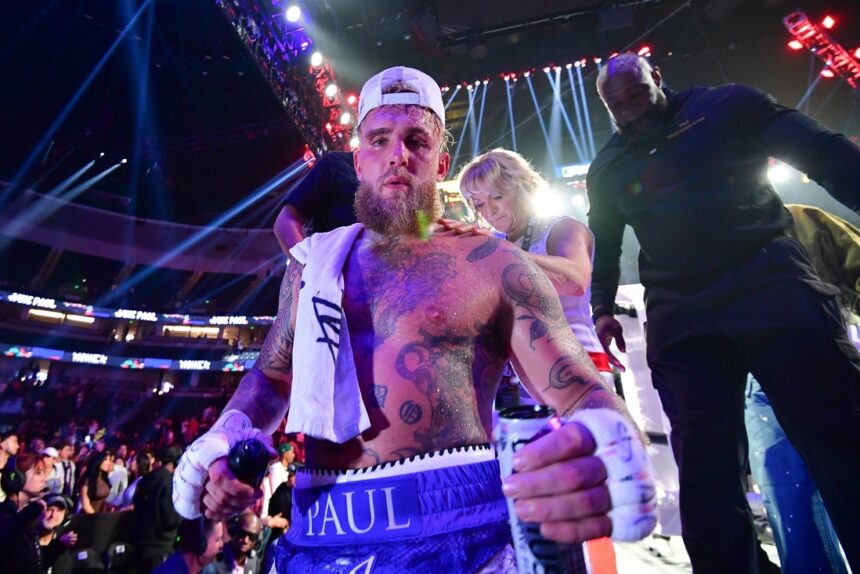AI has become the guiding wheel of content marketing in 2025. How have these advanced tools revamped the old content playbooks?
The endless waves of market disruptions and tech innovations have sent the B2B landscape into a frenzy. Things aren’t what they were before. And neither is content marketing.
With the advent of advanced tools and software, it’s presumed that AI can reshape marketing’s basic approach to generating content. Prompts with relevant keywords and outlines are used to churn out mainstream content that recycles the same message.
There’s a missing factor – one that could help brands stand out.
It’s the human touch that elevates a content’s impact, translating it into a tangible outcome. Most content falls flat without the creativity and edge only human writers can distil.
So, marketers moved away from channeling all of AI’s prowess towards content creation.
It currently functions more as an enabler in augmenting content marketing capabilities – with a suitable balance between creativity and innovation.
Content marketing today: The conundrum and the solution
In B2B marketing, there’s an (over)abundance of content, but all of it’s meant to drive different goals. In all honesty, while marketers focus on the nitty-gritty, they often fail to acknowledge this distinction. Not all marketing content can be promoted in the same way.
It’s straightforward because this is what content marketing is about, but marketing teams are lost in a maze. What do they prioritize – Quality over quantity? Content creation over execution? Searchability over creativity? The nuances are countless.
But suffice it to say, modern marketers are gradually realizing this – the difference in content and its marketing. This is their Eureka moment.
It’s also gradually shifting content marketing’s once static role in B2B.
B2B content marketing has run off this perception. It’s no longer about writing blog posts, case studies, and whitepapers – a machine churning out content to gain organic traction.
Today, it’s mainly driven by personalization, intent, data analytics, AI, automation, and the intricacies of customer behavior.
These components are changing the game for content marketers. Because across the digital landscape, these strategies matter in building targeted and tailored messages that result in maximum impact.
Given the current market conditions, content marketing has shifted towards offering immersive experiences. This, in return, has helped content marketing evolve from recycling the same old tactics to become more sustainable in the long run.
It’s not run as an isolated strategy as before, but is bound strategically with other marketing functions, especially SEO.
The future of content marketing looks quite bright – interactive experiences, long-form storytelling, podcasts, and video-focused marketing, among others.
And this is not merely a fluke to align with the latest trends.
With content marketing going through a much-needed transformation, the goals are the same: customer engagement and retention, lead nurturing, and consistent revenue growth. Marketers are curious – with content marketing being such a cost-effective channel from TOFU to BOFU, does it have any future?
The audience is already undergoing content fatigue. So, its potential has dimmed quite a bit. But its significance stayed the same.
Without content marketing, there’s a massive gap no other can fill. How else do you promote your brand’s story in the most effective and cost-efficient way possible?
The future of content marketing: Three ways it has changed (and continues to)
1. Use of Artificial Intelligence
The first directive that content marketing will surely take is a deep dive into mapping AI-driven strategies. It’s not just the future; we are halfway there.
AI has drastically transformed the way businesses leverage content marketing. While some have dipped their toes too far into the marshland, others are still debating how to leverage AI without losing the human touch.
It’s now easier to expand on your original ideas, analyze customer data, and deliver personalized experiences as they want. Saving time and increased efficiency have become the buzzwords of this AI-driven marketing landscape. And this is what content marketing paired with AI is promising its audience.
What about AI-generated content – will it make the final cut?
Generative AI is all the buzz currently. While its present capabilities are doubtful, its long-term promises hold a certain allure. From Microsoft to Alphabet, the rumors are that the tech giants could be making major improvements to their models, especially for graphic designers, copywriters, and coders.
However, for B2B content marketers, this hasn’t really posed a challenge.
AI-generated content has become too mainstream, so marketers aren’t leaning towards that anymore. But they are taking a different road – one that fits audience preferences.
With marketing pairing AI-centric insights with content marketing, they have developed a balance. Marketers wish to foster impact while keeping efficiency and creativity within the same circle. So, AI is doing the heavy lifting while it’s the role of marketers to instill authenticity and brand voice correctly.
Adopting AI doesn’t mean their content becomes highly mechanized – the human touch continues to take precedence while developing content.
Whilst not entirely used for generating content, AI has afforded scalability and speed to traditional content marketing techniques. More than a writer, it’s used as an assistant to optimize content, build email sequences, and come up with dynamic blog content.
2. Interactive and Personalized Content
In this age of snackable and digital content flooding the market, ask yourself – are static PDFs enough to keep your leads occupied? It might not always keep them engaged.
Content marketing has since then moved to interactive and personalized content, one that actually appeals to B2B audiences. From quizzes and polls to infographics, graphically compelling content is taking over. And for good reason.
Gone are the days of a one-size-fits-all approach. Content marketing has transcended the age of mere passive marketing assets to kick-starting dynamic conversations.
Interactive content isn’t merely about engaging leads, but informing leads on one hand, and engaging informed leads on the other. This creates a give-and-take relationship – you give your audience important information and gain information regarding them.
This is a win-win situation for both parties.
Your customers want a more interactive relationship with you. They aren’t passive actors but are gravely involved in the overall purchasing process. And interactive content only enhances their attention. When potential leads are asked to engage with a LinkedIn poll, it makes them feel involved with the brand.
And the result? Elevated dwelling time and brand visibility.
But immersive and interactive media isn’t just limited to polls and quizzes. It will be built into the experiences from the very start, especially with the help of AR, VR, and video.
Brands will focus more on the ability to connect – the value they provide to their customers.
So, there will be a substantial increase in the use of video content.
Generative AI has granted marketers a crucial tool to create even interactive videos. 73% of content marketers assert that video positively influences their marketing efforts. And rightfully so.
Video grabs attention and ensures the customer is engaged until the very end. But how will it remain a game changer in the age of more advanced tech?
From how-tos and behind-the-scenes to curating stories, video showcases the human angle. And it delivers a great user experience – whether short or long-form, pre-made or live, video has a specific ability to say what needs to be said.
This content type can leave a significant impression on B2B audiences without needing a separate production budget. From portraying a smiling CEO or a happy client to product visualization, video is a treasure trove to reach the right decision-makers.
Think about this: customers will try on products or have an immersive walkthrough through your sales pitch.
Marketing has always promised experiences, no less than anything fantastical. And with the help of tech, the industry is gradually getting there.
3. Creator-led Content: Search Has Changed
The increase in AI-generated content has pushed a single realization to the front – the value of human-creator content. While AI can mask the tone and research its content, there’s a huge hole – the human touch.
So, brands are partnering with human creators to tell authentic stories. This has spotlighted influencer marketing.
For young audiences, search is no longer synonymous with Google. While the tech giant has adapted to the marketing revolution, it’s not the only focus. Platforms like TikTok, YouTube, Instagram, and Reddit have become crucial touchpoints in a user’s buying journey.
Because customers want first-hand experiences, possibly through community and voice. And this is what search is also gradually shifting towards.
Influencer marketing has already been a significant chunk of content marketing. But it’s merely the starting point. Brands are moving from just talking about experiences to authentic collaborations that echo across different segments.
In B2B, instilling this change might be demanding. But it’s not unlikely.
From B2B to B2C to D2C, at the heart of marketing is the need for trust and relevant experiences.
So, what better than leveraging personal and authentic voices to appease your buying committee?
In a landscape where decision-makers tend to be more risk-averse, B2B industry experts can pose as creators. Even behind the scenes of a B2B project development might prove vital for targeted business leaders who want transparency before investing in a brand’s services.
So, creator-led content would come to play an integral role in evolving B2B experiences. And search will no longer be limited to websites. In a world where chat-based discovery becomes the norm, creator-led content will surface.
And the brands repeatedly mentioned by reviewers, creators, and influencers could garner more presence – SERP visibility becomes multi-sourced and multi-formatted.
It will no longer be about traditional ranking methods. Brands will do so through thought-leader-led discussions, social crossovers, their own optimized content, and AI-overviews that cite reliable creators.
At the end of every query or problem, people want to hear from people, not brands.
Brand discovery will transcend relying on Google search to other (believed to be secondary) touchpoints. As Semrush reports, Google’s monopoly is slowly eroding – the tech powerhouse now owns about 84% share in search.
Your priority cannot merely be your website and SEO anymore. Think beyond the obvious and diversify your channels – not the basics. Marketing is mainly about taking the significant leap, so experiment with formats and start with creator-led content marketing.
This is where the future of search is headed (or is gradually seeping into).
The promise?
Hyper-personalization, multimodal discovery (more than just typed queries) managed by AI interfaces, and customers participating in active search through dynamic conversations.
But at the bottom of driving all these changes is one crucial facet – innovation.
Marketers move beyond following trends for content marketing to enter a new phase in its lifecycle.
Once a campaign gets all the flair, other brands rush to copy it. But all of it loses significance in weeks, let alone months. When it loses its spark, customers naturally tune it out.
Becoming part of a trend might be exciting, but its promises are only short-term. Customers don’t want to see the same campaign again and again. Every brand creates SEO blogs, whitepapers, eBooks, and social media posts – what is your brand doing differently to capture demand?
So, don’t just follow short-term trends, think outside the box, and create them. It sounds easy in theory. But every brand has a starting point – the first fundamental brick. Focus on developing a signature experience that no other brand can copy from and one that addresses your ICP’s unique pain points like no other.
The elevated adoption of emerging tech, complex customer behavior, and changing search has stressed modern marketers.
They are grasping at random threads to escape the tunnel. Marketing can feel the impact, but it’s only under the weight of their own unrealistic expectations. This has held marketers back more than they can afford to.
And the only solution has become accepting the long game.
It’s not merely about investing in loads of resources anymore, but the people. AI can replicate most content, but not the experiences and authenticity that only human voices can build.


















